Directions (1-5): Read the following information carefully to answer the given questions:
Twelve people are sitting in a straight line in such a way that some of them facing towards north and some of them facing towards south. Each of the them likes different colour either Green or Yellow. The one who likes Green are facing towards north and the one who likes yellow are facing towards south. Not more than two people likes same colour sit together.
Two people sit between N and T who likes yellow. Four people sit between T and Q who doesn’t sit to the left of N. O sits immediate left of T. Both the immediate neighbor of N likes Green. S sit second to the left of M. Both the immediate neighbors of O faces in opposite direction as O. P is not an immediate neighbor of N but likes Green. Only two people sit left of V. S faces in opposite direction as X. N faces towards south. Not more than two people sit between Q and V who likes Green. M sit second to the left of W who sits third to the right of R. W likes Green. Only two people sit between U and R who is not an immediate neighbor of V. Neither O nor M sit at any extreme end of the line. Q likes Yellow.
Q1. Who among the following sits third to the left of W?
(a) S
(b) V
(c) X
(d) R
(e) P
Q2. Four of the following five from a group which among the following does not belong to this group?
(a) P
(b) X
(c) O
(d) N
(e) M
Q3. How many persons sit between T and the one who sits immediate right of M?
(a) None
(b) two
(c) three
(d) Four
(e) More than Four
Q4. Which of the following statement is true about X?
(a) X sits third to the right of Q
(b) X likes Green colour
(c) More than two persons sit O and X
(d) the one who likes green colour sits immediate left of X
(e) Only three persons sit between X and V
Q5. What is the position of S with respect to N?
(a) Fifth to the right
(b) Immediate left
(c) Third to the left
(d) Second to the right
(e) None of these
Direction (6-7): In making decisions about important questions, it is desirable to be able to distinguish between “Strong” arguments and “Weak” arguments in so far as they relate to the question. “Strong” arguments are those which are both important and directly related to the question. “Weak” arguments are those which are of minor importance and also may not be directly related to the question or may be related to a trivial aspect of the question.
Instructions: Each question below is followed by two arguments numbered I and II. You have to decide which of the arguments is a strong argument and which is a weak argument. Give answer
(a) if only argument I is strong.
(b) if only argument II is strong.
(c) if either I or II is strong.
(d) if neither I nor II is strong; and
(e) if both I and II are strong.
Q6. Statement: Should only reputed NGOs be authorized to distribute the commodities to the public under the programme of Public Distribution System (PDS)?
Arguments:
I. Yes, the move will be helpful to implement the programme more effectively and will keep a tab on various problems like black marketing of the commodities supplied under PDS.
II. Yes, NGOs have helped government on many occasions.
Q7. Statement: Should vacation of Central government employees be reduced?
Arguments:
I. Yes, increase in number of working days will speed up the work done by the Central government employees, as a result of which people will get service from these employees in reasonable time.
II. Yes, vacation makes the employees lazy and reduces the stamina of employees to work for long hours.
Directions (8-10): Study the following information carefully and answer the questions given below.
P%Q (32)- P is 8m in north of Q
P$Q (24)- P is 6m in south of Q
P#Q (48)- P is 12m in east of Q
P&Q (16)- P is 4m in west of Q
D#H (12), L%O (28), P&T (44), M%L (4), D&I (36) I$J (64), W&O (44), J&P (4), T%W (40)
Q8. What is the direction and shortest distance of point L with respect to point I?
(a) 2√349m, North-East
(b) 28m, North-East
(c)√789m, South-West
(d) 27m, North-East
(e) None of these
Q9. What is the direction of point J with respect to point M?
(a) South-east
(b) North-east
(c) South
(d) North
(e) None of these
Q10. If Point S is 7m south of point J, then what is the shortest distance between S and H?
(a) 14m
(b) 17m
(c) 11m
(d) 15m
(e) None of these
Directions (11-13): Study the following information to answer the given questions:
A*B means B is 2m east to A
A@B means B is 1m west to A
A#B means B is 2m south to A
A%B means B is 1m north to A
A!B means B is 2m east to A
If T#R, Q@P, S*R, Q%S, S%U, holds true, then
Q11. In which direction is T with respect to U?
(a) South west
(b) Northeast
(c) South east
(d) Northwest
(e) None of these
Q12. In which direction is P with respect to R?
(a) South west
(b) Northeast
(c) South east
(d) Northwest
(e) None of these
Q13. What is the shortest distance U and R?
(a) 5m
(b) 3m
(c) 4m
(d) √3m
(e) None of these
Directions (14-15): Study the following information carefully and answer the given questions. A word and number arrangement machine when given an input line of words and numbers rearranges them following a particular rule in each step. The following is an illustration of an input and its rearrangement.
Input :51 watch 11 Pretty 21 New 10 Lord 41
Step I: Lord watch 11 Pretty 21 New 10 41 51
Step II: Lord New watch 11 Pretty 10 21 41 51
Step III: Lord New Pretty watch 10 11 21 41 51
Step IV: Lord New Pretty watch 1 4 9 25 36
Step IV is the last step of the above input. As per the rules followed in the above steps find the appropriate step for the given input.
Input: Zapak 13 hit 15 vision 16 Far 22 kilo 18 yard 12
Q14. What is the position of ‘vision’ in Step III?
(a) Sixth from the left
(b) Fifth from the right
(c) Fourth from the left
(d) Sixth from the right
(e) None of these
Q15. Which of the following would be at the 7th position from the right in Step V?
(a) zapak
(b) yard
(c) 13
(d) 15
(e) None of these
Solutions
Solution (1-5):
Sol.

S1. Ans. (b)
S2. Ans. (d)
S3. Ans. (d)
S4. Ans. (b)
S5. Ans. (a)
S6. Ans. (a)
Sol. Only I is strong because it will make the PDS programme more meaningful and purposeful. II is weak because it adds nothing substantial to the statement.
S7. Ans. (a)
Sol. II is weak argument because it wrongly assumes that vacation makes employees lazy and less hardworking. I is strong because lesser vacation ensures higher working days. And no doubt increase in the number of working days will reduce the work pending.
Solutions (8-10):
Sol.
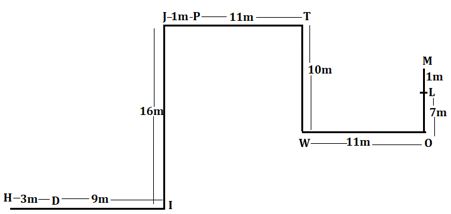
S8. Ans. (e)
S9. Ans. (e)
S10. Ans. (d)
Solution (11-13):
Sol.
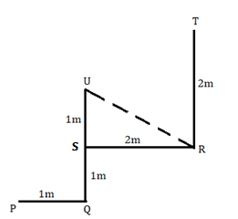
S11. Ans(b)
S12. Ans(a)
S13. Ans(e)
Solutions (14-15):
Sol. Students let us understand the Logic behind this Question and let’s understand how to solve it. As a first step let’s first understand the logic behind the Output. If you will see the final output, you will observe the following: The machine arranges the words and the numbers in each step. As for words,
(a) The words are arranged in alphabetical order from left to right
(b) The numbers are arranged in descending order from right to left.
(c) However, after arranging all the numbers, square of the sum of both the digits of the number is written in last step.
Input: Zapak 13 hit 15 vision 16 Far 22 kilo 18 yard 12
Step I: Far zapak 13 hit 15 vision 16 kilo 18 yard 12 22
Step II: Far hit zapak 13 15 vision 16 kilo yard 12 18 22
Step III: Far hit kilo zapak 13 15 vision yard 12 16 18 22
Step IV: Far hit kilo vision zapak 13 yard 12 15 16 18 22
Step V: Far hit kilo vision yard zapak 12 13 15 16 18 22
Step VI: Far hit kilo vision yard zapak 9 16 36 49 81 16.
S14. Ans. (d)
S15. Ans. (a)


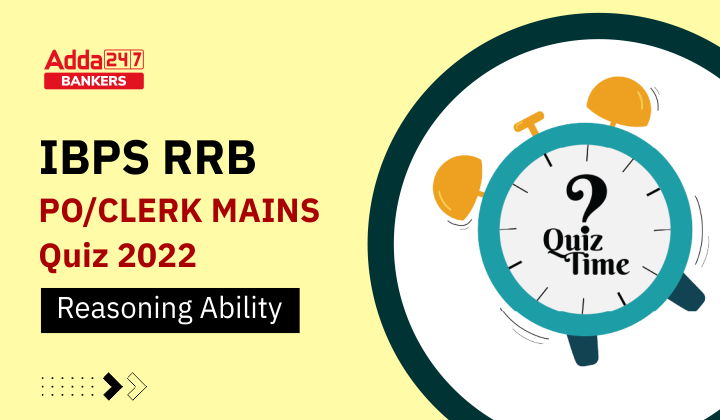
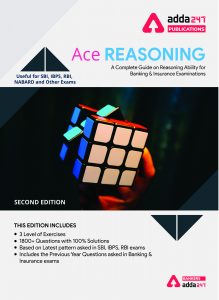

 GA Capsule for SBI Clerk Mains 2025, Dow...
GA Capsule for SBI Clerk Mains 2025, Dow...
 The Hindu Review October 2022: Download ...
The Hindu Review October 2022: Download ...
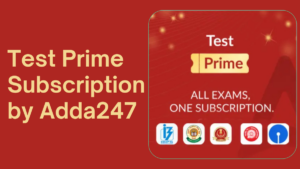 Test Prime Subscription by Adda247
Test Prime Subscription by Adda247


